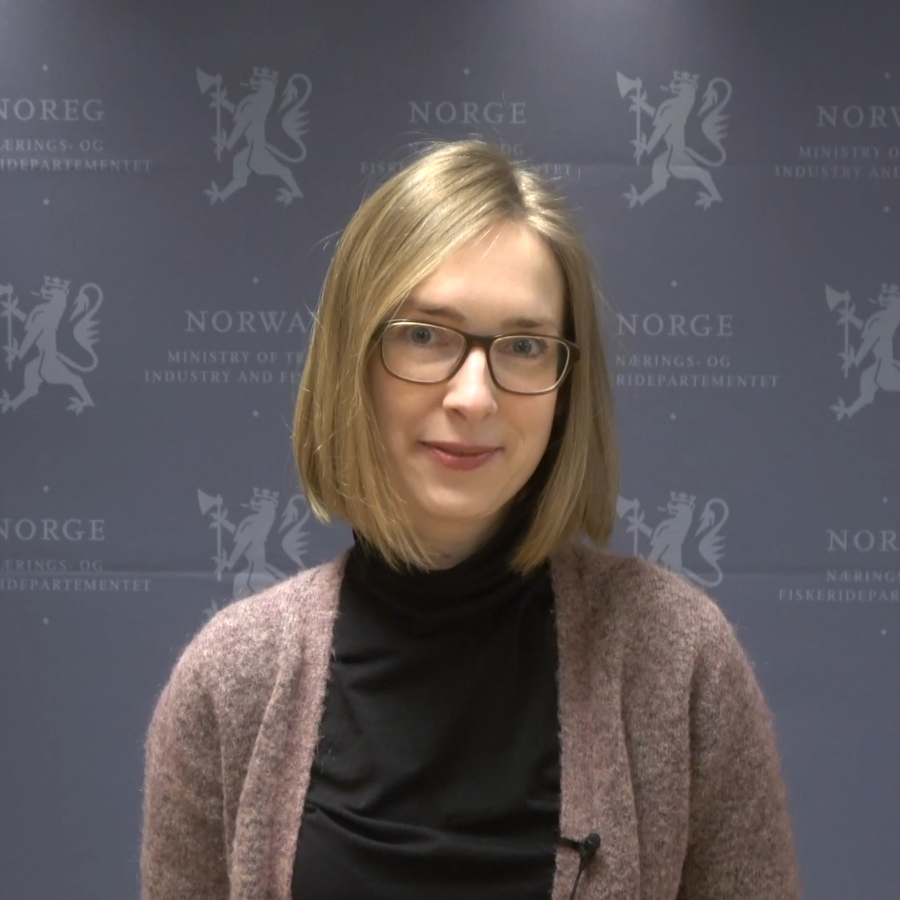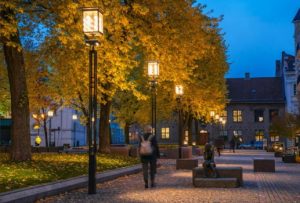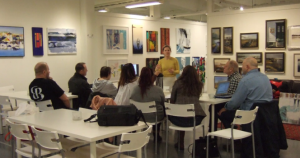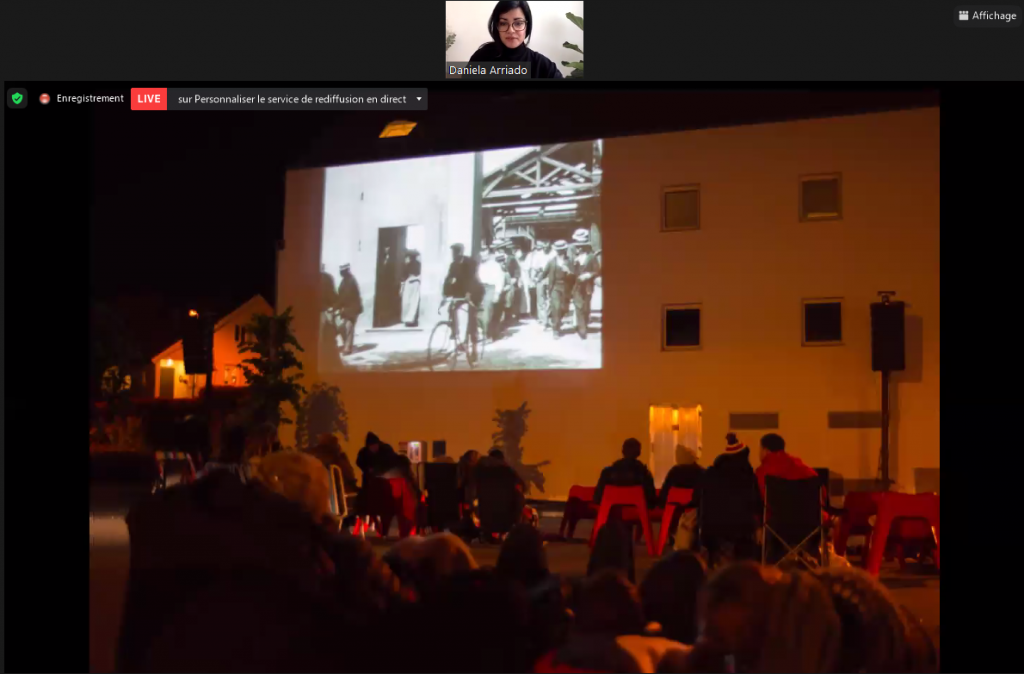From sustainable smart lighting to the magic of light: a digital experience of Stavanger
Over 300 participants came together online for a unique insight on the urban lighting strategy of the City of Stavanger (Norway) on 18 – 19 March 2021.
- Urban planners, lighting designers & city employees from 40 countries, with 52 cities officially represented
- 24 speakers in 4 sessions & exclusive Coffee Bre@k for LUCI members
This first-ever fully online City under Microscope gave attendees an interactive digital tour of the city. Participants joined an immersive experience with “walk & talk” sessions with local experts showing them around Stavanger and its urban lighting projects – from a quick drive around Stavanger’s smart city pilots, through a leisurely walk through the illuminated city centre at night.
The event was opened by Iselin Nybø, the Norwegian Minister of Trade and Industry (left), and Kari Nessa Nordtun (right), Mayor of Stavanger. They briefly introduced Stavanger and underlined the importance of light for the city’s development and future.
A city at the forefront of smart solutions to tackle climate change
Stavanger is the third largest metropolitan area in Norway and has been known has the “Energy Capital” of the country due to its strong links to the oil industry. Today, the city has chosen to address climate change head on, with the goal of becoming carbon neutral in 2040, according to Leidulf Skjørestad, Director of Urban Environment and Development for the city.
This ambitious objective is made possible by prioritizing the use of green energy and focusing on smart city solutions. For instance, Eimund Nygaard, CEO of municipal utility company Lyse, explained that the city chose very early on to build hydropower stations in the neighbouring fjords.
With Gunnar Crawford, Head of Smart City Stavanger, and Trond Thorbjørnsen (Lyse), participants also got to discover the smart technology solutions implemented in the city, such as smart poles and EV charging stations.
Finally, while the city is looking towards the future, it has also preserved and built upon its heritage: for instance, old lamp designs were kept but fitted with modern, energy-efficient LEDs, as explained by Hanne Windsholt, Head of the Cultural Heritage Management Office.
Participative lighting plans and innovative projects
One of the first cities in Norway to have commissioned a lighting masterplan in 2005, Stavanger continues to innovate. Its recently revised lighting plan, presented by Nevena Kovacevic, lighting designer at Zenisk, was awarded the Norwegian Lighting Award last year. The participatory process and comprehensive approach of the new lighting plan set the tone for all lighting projects in the city, with clear objectives such as cutting energy consumption, enhancing the attractivity of urban spaces, and addressing the problem of light pollution in the city and beyond.
Participants also learned about two light festivals organised in Stavanger, both with very different approaches. Tina Aksnes (City of Stavanger) presented the Vinterljus festival and its focus on community participation and co-creation in small-scale public spaces. Daniela Arriado presented the Screen City biennial, and its focus on light, image, sound and architecture.
Other inspiring moments featured a presentation by Katia Banoun of the latest recipients of the Norwegian Lighting Awards, and a light art project by Viel Bjerkeset Andersen in the world’s longest undersea tunnel.
A balancing act: considering the impact of light on human health and nature
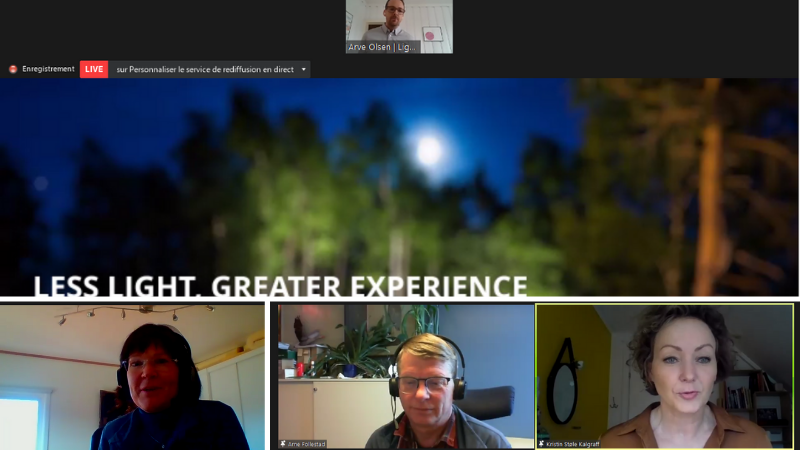
A standout topic that generated much interest and discussion was the challenge of lighting green spaces while respecting biodiversity. Torgeir Sørensen, Parks and Roads Manager, presented the framework specifically developed by the city for the lighting of parks and trails.
The illumination of green trails in Stavanger’s many surrounding natural areas encourages people to go outdoor during the long dark winter months, as shown by Anne Katrine Lycke. However, this attractivity can be a double-edged sword: the immense success of these initiatives has led to more demand for light. Speakers such as Arne Follestad spoke of the necessity to conduct more research on the impacts of artificial light on nature and biodiversity, and to educate and raise awareness about light pollution.
Finally, participants were also introduced to an exemplar case study: the illumination of a nature walk around a small island located in the north of Stavanger, by Arve Olsen of LightBureau.
Fostering community spirit in the LUCI network
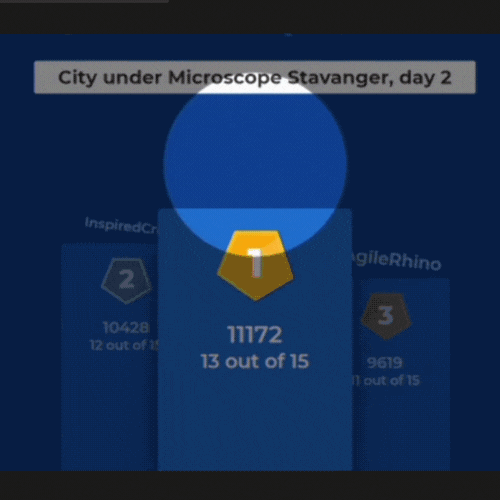
On Thursday, LUCI members enjoyed an exclusive session with Claus Petersen (Stavanger) & Ingvild Abrahamsen (Lyse) for a behind-the-scenes look at their challenges and visions for the future of lighting in the city.
To reinforce the community spirit, an interactive quiz was the chance for participants worldwide to enjoy a fun moment together and test their newly acquired knowledge of Stavanger’s lighting projects. Louis Poulsen and Signify provided the prizes. Congratulations to the winners!
Finally, the City under Microscope Stavanger was the opportunity to announce our next event: the LUCI Annual General Meeting, which will take place in Tartu (Estonia).
#LUCIcmStavanger is a wrap!
— LUCI Association (@LUCIassociation) March 19, 2021
The #LUCInetwork wants to thank the City of Stavanger for this amazing event 🎉
We are also excited to announce that our next event will be happening in Tartu 🇪🇪 We hope to meet you there in October, so save the date: 27-30 October 2021! pic.twitter.com/OUnfKykuBn
- Learn more about the event’s programme and speakers;
- Head on Twitter at #LUCIcmStavanger for more of the event — as it happened;
- LUCI members will soon be able to watch videos & presentations made during the conferences in the LUCI Hub;
- Since its creation in 2002, LUCI has, along with its member cities, been organising events to help city professionals exchange information and know-how on the issues that most concern them. Take a look!

